Relearning How to Perform Family
In the wake of her mother's passing, Delia Lloyd wonders what happens to a family's structure when the principal choreographer leaves the scene.
Not long after my mother died, my sister got a call from the independent living facility where my mother had been living. The caller — a friend of my mother’s who also lived there — had spotted a pillow on a side table in one of the dining rooms. She recognized it instantly as my mother’s.
My sister sent me a photo of the pillow. Sewn onto its mustard-yellow background was a tableau of my family: my father, smoking a cigarette and holding a newspaper; my mother clad in a tennis dress; and four children ranging in age from roughly 9-15, each with a signature hobby stitched alongside them: a Sherlock Holmes book for one, a catcher’s mitt for another. Even our dog, Hector, an honorary fifth sibling, was present.
My mother had commissioned the pillow from a crafty neighbor back in the mid-1970s. Despite the grime that had accumulated over the years — the bright, white tennis dress now more of a Spanish grey — the pillow proffered a portrait of family unity. It was but one of many instantiations of how we performed family throughout my mother’s lifetime. When she died at the age of 89 in 2020, I realized that we did not know how to carry on this performance without her.
The nuclear family has long been venerated as an ideal in Western culture. Television, film, and advertising project images of what a “happy family” looks like, and we feel compelled to recapitulate those tropes in our daily life. But while most families struggle to achieve the degree of harmony depicted in their annual holiday cards, we are all deeply attached to the normative vision.
It was but one of many instantiations of how we performed family throughout my mother’s lifetime. When she died at the age of 89 in 2020, I realized that we did not know how to carry on this performance without her.
My family was no different. My mother furnished the rituals and language that enabled the six of us to be a “happy family.” Or, at least, to walk, talk and act like a “happy family.” And although Tolstoy might have harboured his doubts, it was a performance that we perfected over the decades.
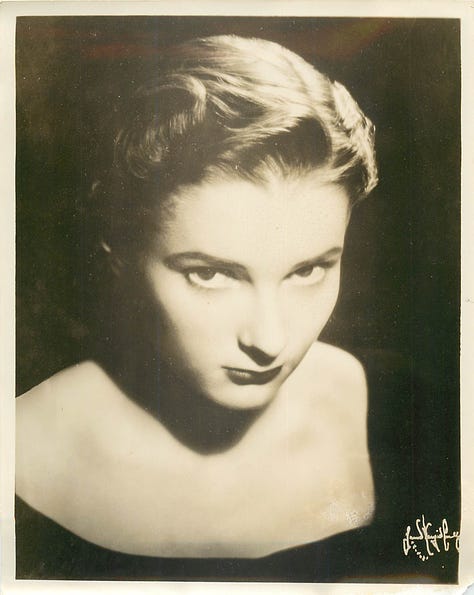
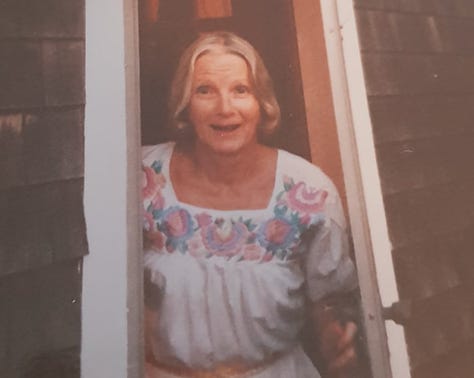
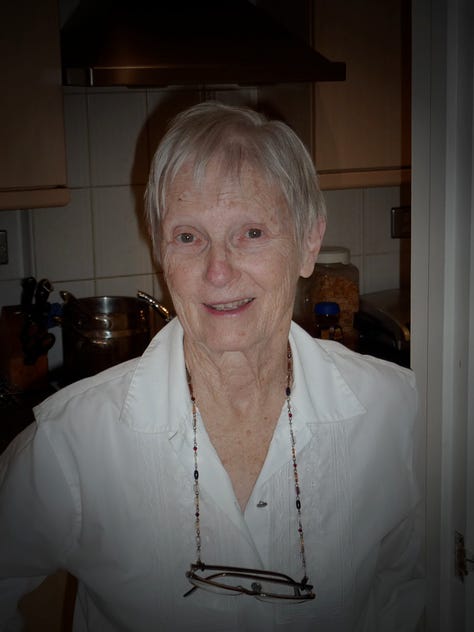
Dinner was one such ritual. It took place every evening at 6 o’clock, and we all needed to be there, on time and in our customary seats. Each meal featured a set menu: some form of meat (usually red), a vegetable, and a potato. It wasn’t until I left home at 18 that I came to realize that not all families ate potatoes with dinner every night. To this day, I still can’t sit down to a meal without a paper napkin folded in a triangle to the left of my plate, the fork centered above it, just as my mother did it. The folded napkin is an indispensable symbol of “meal.”
The kitchen where we ate those meals together had one unusual design feature. One wall was covered entirely with doors: four, to be precise. At some point during my childhood, my mother covered them with giant, black-and-white enlargements of baby pictures of each of her four children. When you entered this room from the back yard, this tetraptych was the first thing to meet your gaze. Much like the pillow, and with an unintentional nod to the musical group Sister Sledge, these baby photos positively screamed “We Are Family.”
But dinner was merely a warm-up for the elaborate pageantry of Christmas, which — like all good holiday productions — relied on an extensive set of props. The set piece was a sagging, cardboard crèche with a frayed, straw roof. The crèche housed a set of chipped, ceramic figures — the dramatis personae of the Nativity story: Joseph, Mary, the Three Wise Men, along with a shepherd and some lambs. Throughout the month of December, I would sit and play for hours with these figurines, concocting alternative family narratives, Hector the dog steadfastly at my side.
My mother furnished the rituals and language that enabled the six of us to be a “happy family.” Or, at least, to walk, talk and act like a “happy family.” And although Tolstoy might have harboured his doubts, it was a performance that we perfected over the decades.
A week or so before the holiday, my mother would host a gathering for my father’s extended family: a sprawling, multi-generational blur of Johns, Margarets, Matthews and Kathleens. One of my father’s cousins — a schizophrenic chain smoker — always arrived first, clad in a floppy Santa hat. No one ever saw her during the rest of the year. But she invariably left an ashtray full of Menthol cigarette butts in her wake, emblazoned with her yam-colored lipstick, evidence that she was still part of the entourage.
Another staple of these parties was a cousin’s husband affectionately known as “Jaws.” “Jaws” was so nicknamed because he’d fallen from the top of a four-story building during his 20’s and broken his jaw. Jaws always brought along his guitar, and after dinner he’d lead everyone in a tentative round of Jingle Bells. By the end of the evening, the garage floor would feature the bricolage of Budweiser and Schlitz empties, their red, white, and gold designs melding artfully with the seasonal mise-en-scène. (Over the years, as assorted family members made their way through Twelve Step programs, these cans were gradually replaced with the equally festive green signage of Clausthaler and O’Douls.)
None of this spectacle would have happened without my mother. Her role as protagonist was cemented on Christmas Eve, when only our immediate family (and, later, spouses and grandchildren) would assemble. As she lit the four candles in the Advent wreath — three purple, one white — to mark the end of the season, she would recite the biblical verse: “Drop down dew, ye heavens from above.” In a call-and-response worthy of a British pantomime, we would all chant “And let the clouds reign the just one.” The meal would then commence, my mother presiding over it in her signature Christmas sweater: a buoyant Santa in a pom-pom hat, steering a sleigh of reindeer.
An actress can be replaced with an understudy. But losing the lead character in a drama leaves a hole in the storyline. And my mother wasn’t just the star of our family play. She was the director and choreographer as well.
Which meant that once she was gone (my father had died 11 years earlier), it wasn’t clear how we could reconstruct any of this. Or, perhaps worse, if anybody really wanted to. Because underneath the numerous enactments of family togetherness lay something far less harmonious.
My parents fought over most things when I was growing up — politics, religion, money. Although they never acted upon it, the possibility of divorce always hovered in the wings. (As a wise soul once observed, uttering the word “divorce” in a Catholic family is like saying “cancer” for anyone else.)
As they aged, however, my parents grew closer. They laughed more at each other’s eccentricities and found common ground in the things they both enjoyed: books, travel, theater, cross-country skiing. By the time my father died, I would have even gone so far as to label them a “happy couple.”
My siblings constituted a different story altogether. As a youngster, one of my brothers suffered from undiagnosed and untreated emotional problems. Three decades later, these would have put him squarely “on the spectrum,” but back then, they merely made him volatile. The other three kids were a close-knit unit early on, functioning almost as a parallel set of siblings. We wrote and performed skits with my cousins at family reunions, climbed trees together, and played Kick the Can out in the streets with a ragtag band of neighborhood kids. But by adolescence, a deep, unspecified fissure opened up between my other brother and my sister that would permanently dissolve that bond.
An actress can be replaced with an understudy. But losing the lead character in a drama leaves a hole in the storyline. And my mother wasn’t just the star of our family play. She was the director and choreographer as well.
As my siblings became adults, these ancient and unresolved childhood tensions, together with differences in temperament and the fallout from assorted mental health crises, reinforced those divisions. Despite never living more than an hour’s drive from one another or from my parents, the three of them really only saw one another when my mother organized an event. Of course, with a family the size of ours (one of my brothers has seven children), there was always a birthday, Christening or Fourth of July party to keep the troops at least nominally united.
As for me? I got along well with all three of them. But, to paraphrase Robert Frost, I took the road less travelled by. Once I left for college, I never again lived in the tri-state area where they were all concentrated, eventually settling in London with my own family. Apart from the last few years of my mother’s life, I only returned to their orbit every other Christmas.
When my mother began to decline, I confessed to a therapist that the thing I feared most once she was gone was the absence of structure. “Who will hold the annual family Christmas party?” I asked, plaintively. It was the voice of that little girl still trying to fashion a coherent plot line from the disparate figures in the broken-down family manger.
“Maybe the new structure is that there is no structure,” the therapist surmised.
I had difficulty accepting that. I still do. Improvisation was never my family’s strong suit. And after one of my siblings was ex-communicated from the family for a severe ethical lapse shortly before my mother’s death, that left only three of us to ad lib the performance of family.
Her death forced a certain rapprochement amongst us, as a barrage of legal, financial, and logistical hurdles emerged overnight: finalizing the inheritance…emptying her apartment…distributing heirlooms across our respective families. In the ensuing months, I noticed that my two “extant” siblings began to see one another more often: a hike here, a dinner there. It was as if, freed of my mother’s watchful gaze, they were suddenly liberated to override the centrifugal forces that had pulled them apart for decades.
The first Christmas Eve without my mother, one of my nieces gathered a bunch of us for a zoom call. The assembled multitudes lit a digital advent wreath and sung a round of “O Come, O Come Emmanuel.” Then we all went around in a circle as each person supplied one adjective to describe my mother. The entire affair was over in a matter of minutes.
It wasn’t much, but it was something. And I wondered to myself if, perhaps, there was more to that resurfaced, beat-up pillow of my family than I once appreciated.


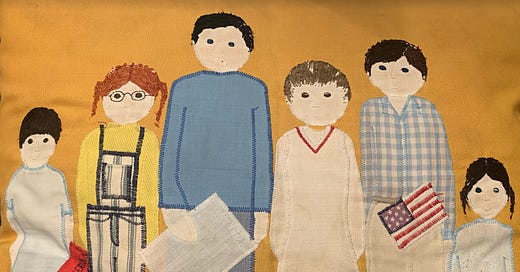



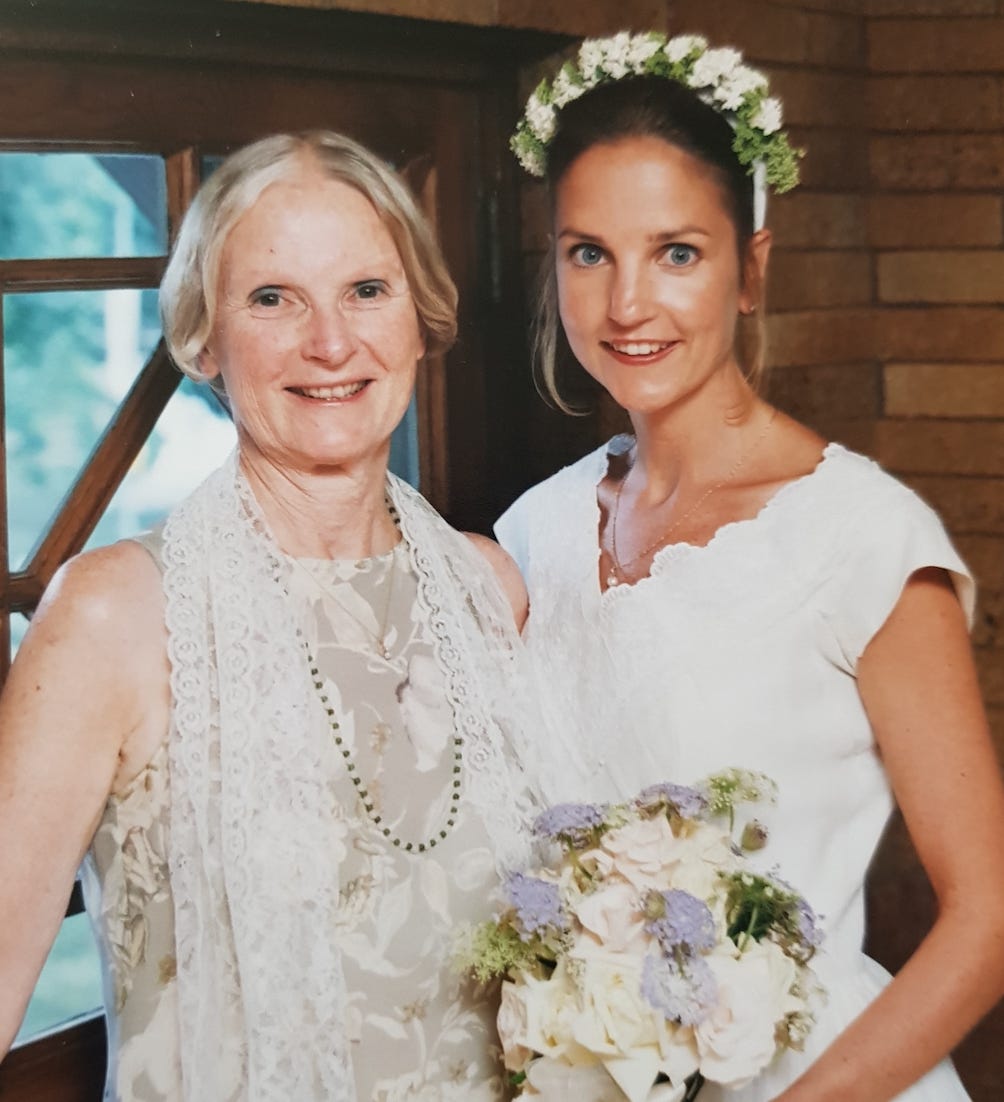

Made me think of all the ways my family has come undone since my dad died 23 years ago. We never understood that he was our oxygen.
Beautifully told. As you told it, I could only think about all the pain, duplicity, anguish, anger and stifled creativity that made up the stuffing of that overstuffed pillow. And how very nice that you found an opening in a seam somewhere that allowed you release.